ACCUPAR LP-80
ACCUPAR LP-80
Canopy Interception and Leaf Area Index
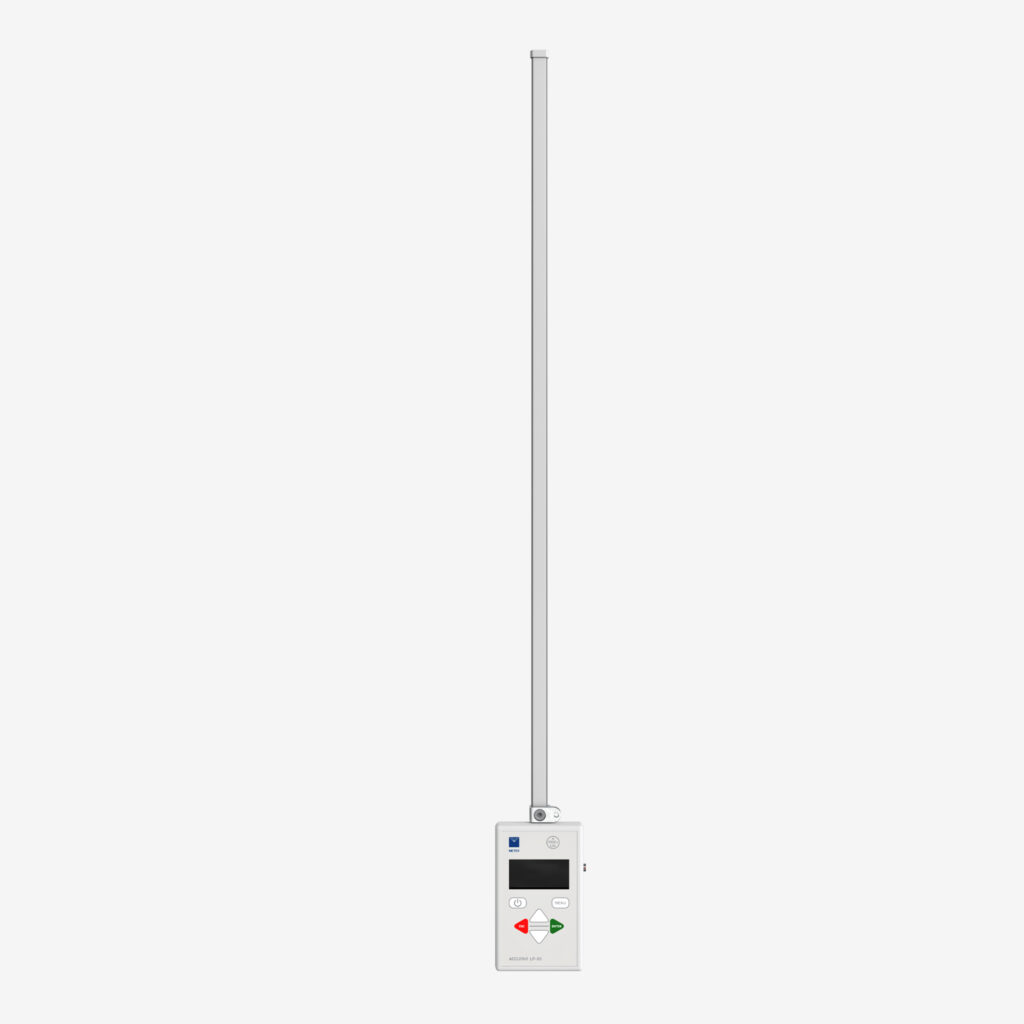
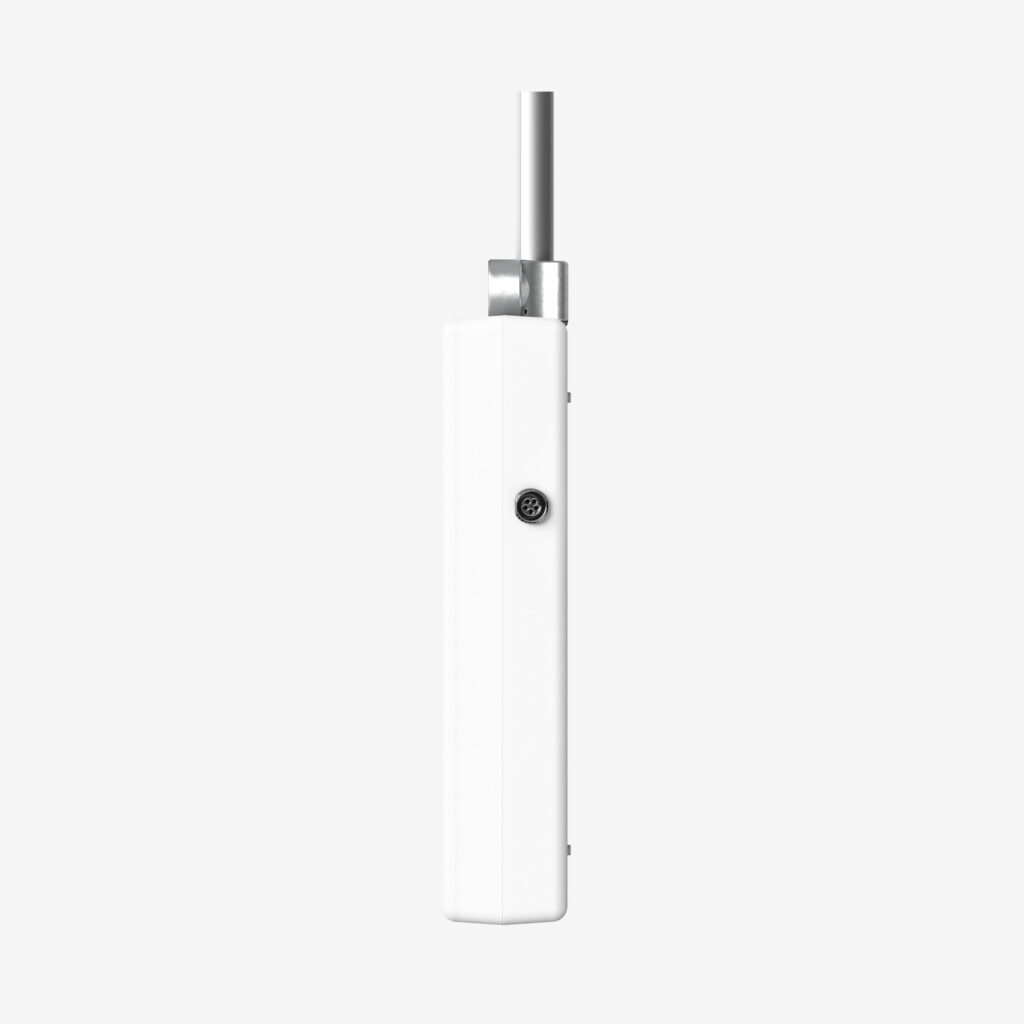
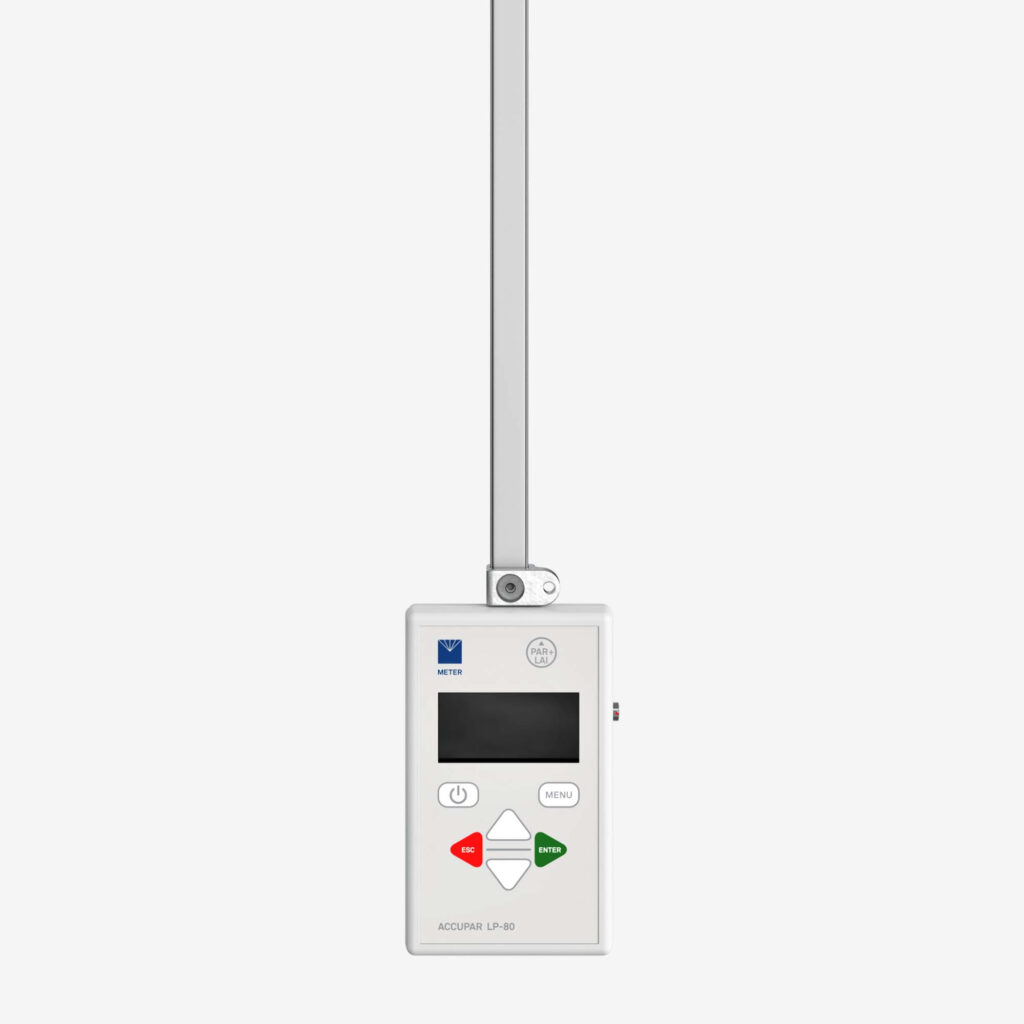
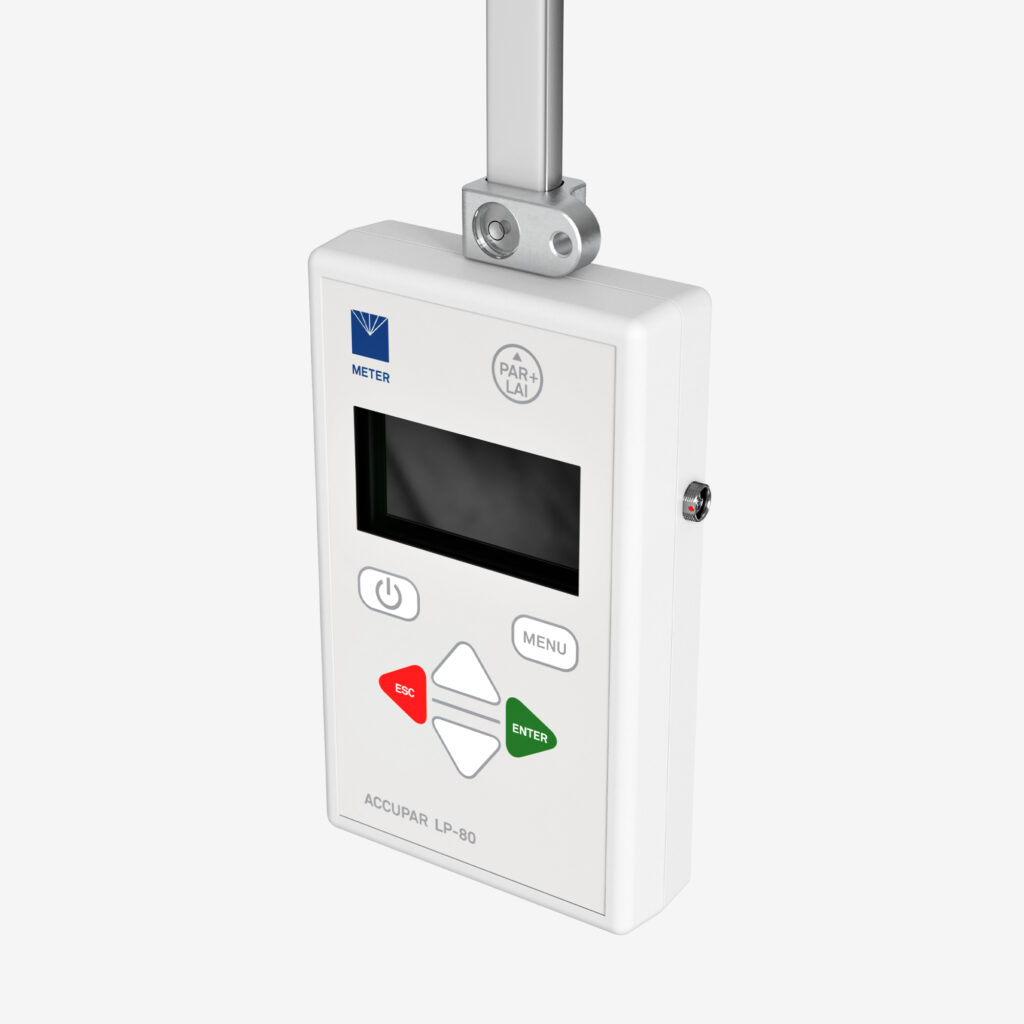
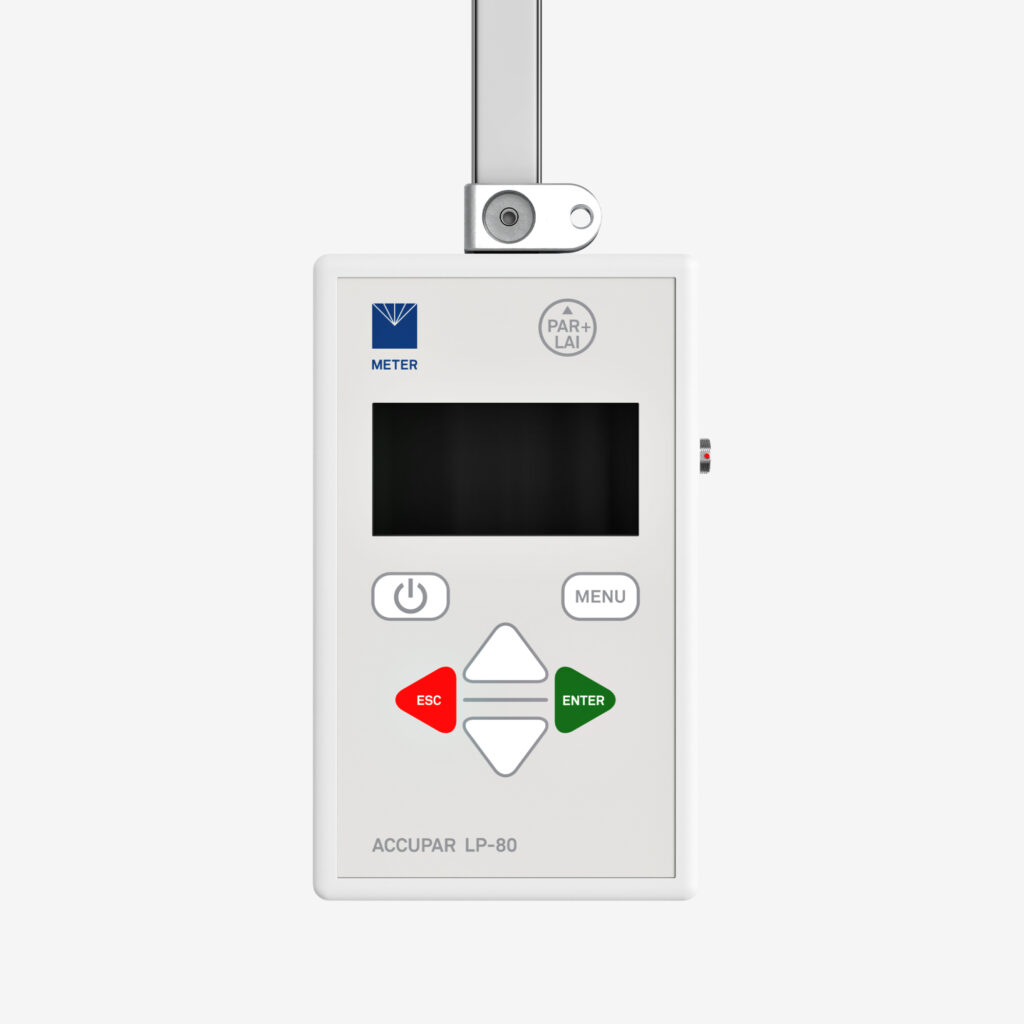
The LP-80 is a highly accurate way to determine canopy growth and canopy light interception (PAR and LAI), along with calculating fractional interception and crop coefficient.
- Above-canopy sensor enables simultaneous above- and below-canopy PAR measurements
- Measures canopy PAR transmission
- Automatically calculates Leaf Area Index in real-time
Measuring canopy density can be problematic
There are several methods to measure how much light is intercepted by a canopy in order to determine if water loss is from evaporation or transpiration. There’s the hard way. There’s the expensive way. And then there’s the smart way: the LP-80.
Rapid readings. Easy to use.
The optimal method for measuring fractional PAR (photosynthetically active radiation) is with the LP-80 Ceptometer. It’s a highly accurate way to determine canopy growth and canopy light interception, along with calculating fractional interception and crop coefficient. And because the methodology is automated, it spares you from intensive hand labor, saving you time. The LP-80’s low cost also saves your entire budget from evaporating.
Reliable results never get old
Backed by 35 years of research, the LP-80 is one of the most trusted and relied upon instruments among crop scientists, ecologists, and foresters for publishable data year after year. Why? It uses precise sun angle calculations to accurately and automatically calculate leaf area index (LAI) in real time, so you can be confident your data is right while in the field. And it includes external PAR sensor which can be used to make simultaneous above- and below-canopy PAR measurements as a reference for intercepted light in clear, partly cloudy, or even overcast sky conditions.
Accurate. Automated. Affordable.
Measure leaf area index (LAI) and fractional interception simply and accurately to estimate ET and canopy growth. A lightweight, portable, linear array of PAR sensors designed for real time, non-destructive LAI measurements, the LP-80 has you covered when it comes to reliable results, and time, labor, and cost savings.
Simplifies the measurement and the data
Rather than the painstaking 4- to 5-hour destructive method of running leaves through a conveyor belt, the LP-80 instead measures the photosynthetically active radiation that is impinging on the measurement wand. This is also a lot easier than the other time-consuming, multi-step alternative of placing a camera beneath a canopy, taking a picture with a fisheye lens and then using software for photo analysis.
LP-80 doesn’t just automate the measurement but also the data itself. Even in raw form, data are collected, stored, and can even be downloaded so you can analyze your data anywhere. This allows you to look at correlations to make sure what you saw in the field is consistent with your measurements. In addition, the attached controller can be used to take measurements manually or log data unattended for short periods of time.
The same measurements for less
The LP-80 costs less than competitor instruments that make the exact same measurements. It weighs less as well. At a little over one pound (0.5 kg), it’s not only lightweight, but smaller and self-contained, so it’s easier to carry around. And because the display is integrated with the measurement wand, you aren’t burdened by having to bring a separate instrument to read data. There aren’t any complex sets of buttons or screens to navigate either, allowing the LP-80 to provide the most value for less.
Feature summary
- Above-canopy sensor enables simultaneous above- and below-canopy PAR measurements
- Measures canopy PAR
- Automatically calculates Leaf Area Index in real-time
- Lightweight and self-contained
- Powered by four AAA batteries
- Can log data unattended for short periods of time
- Stores over 2,000 readings for later download and analysis
Measurement Specifications
Probe PAR Sensors
Range: 0.0 – 2500.0 μmol/(m2s)
Resolution: 1.0 μmol/(m2s)
External PAR Sensor
Range: 0 to 4,000 μmol/(m2s) (full sunlight ~2,000 μmol/[m2s])
Resolution: 1.0 μmol/(m2s)
Accuracy: ±5.0 %
Unattended Logging Interval
Between 1 and 60 min (user selectable)
Physical Specifications
Computer Interface
Locking 5-pin sealed circular connector to RS-232 cable
Controller
Length: 15.8 cm (6.20 in)
Width: 9.5 cm (3.75 in)
Height: 3.3 cm (1.30 in)
Weight: 0.6 kg (1.21 lb) with batteries
External PAR Sensor
Locking 5-pin sealed circular connector on 5-m cable
External Sensor Dimensions
Diameter: 24.0 mm (0.94 in)
Height: 27.0 mm (1.06 in)
Probe Dimensions
Length: 86.5 cm (34.06 in)
Width: 19.0 mm (0.75 in)
Height: 9.5 mm (0.38 in)
Probe Sensors
Number: 80
Type: Photosynthetically active radiation sensor
External Sensor
Number: 1
Type: Apogee SQ110 photosynthetically active radiation sensor
Data Storage
1 MB flash memory
Operating Temperature Range
Minimum: 0 °C
Maximum: 50 °C
Operating Relative Humidity Range
Minimum: 0 %
Maximum: 100 %
Power
4 AA batteries, included
Other
Compliance
EM ISO/IEC 17050:2010 (CE Mark)
GSA
